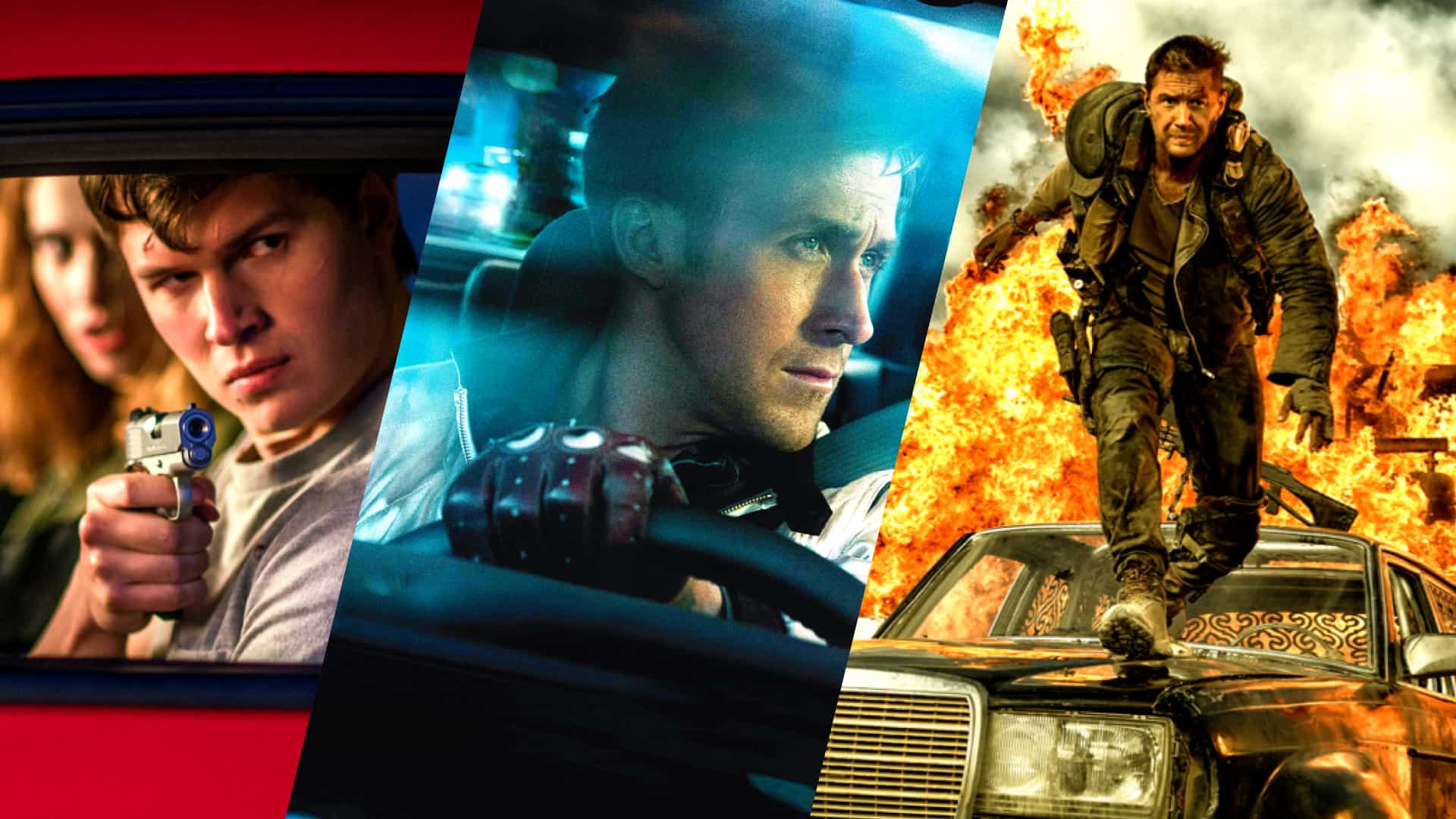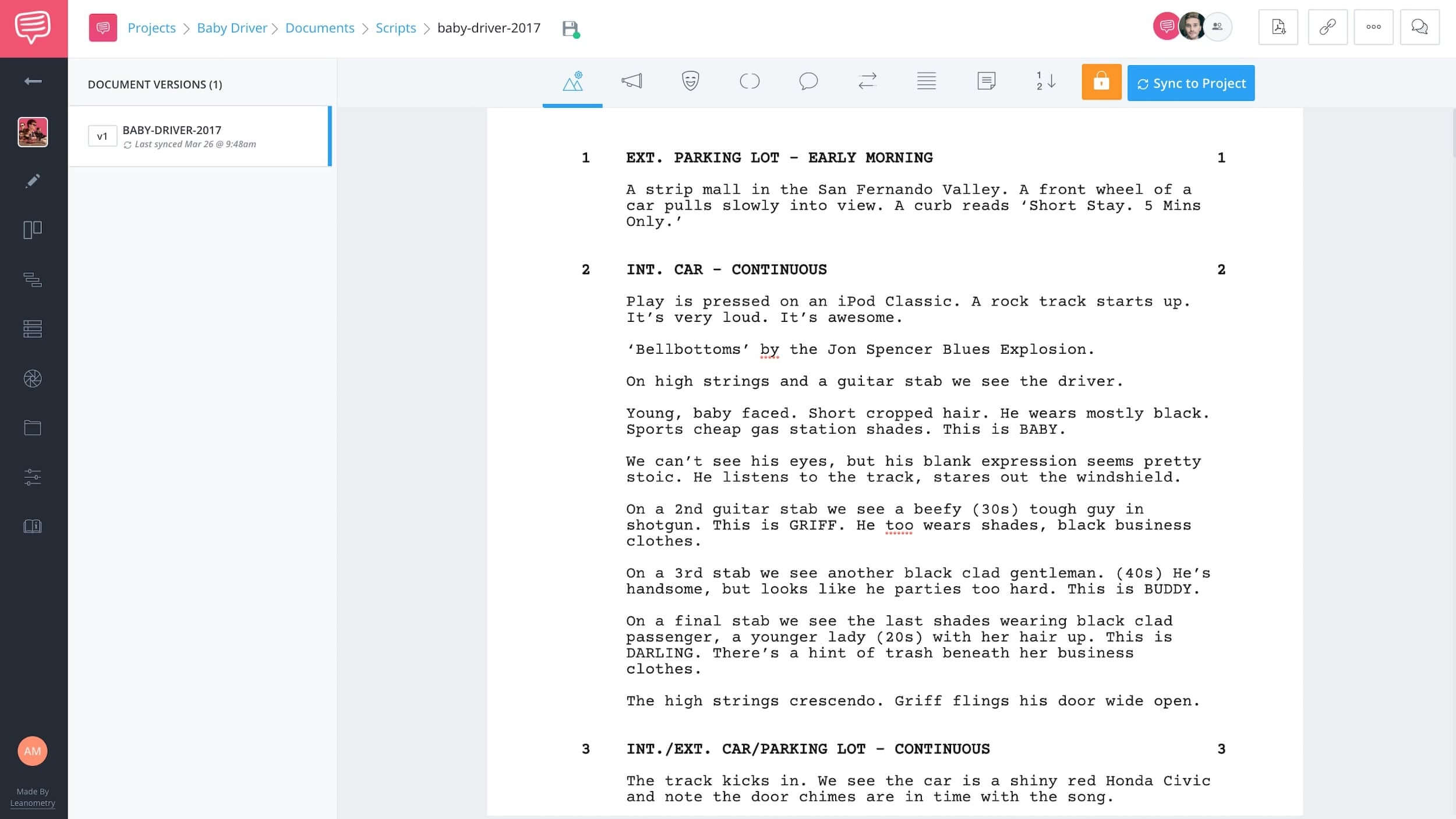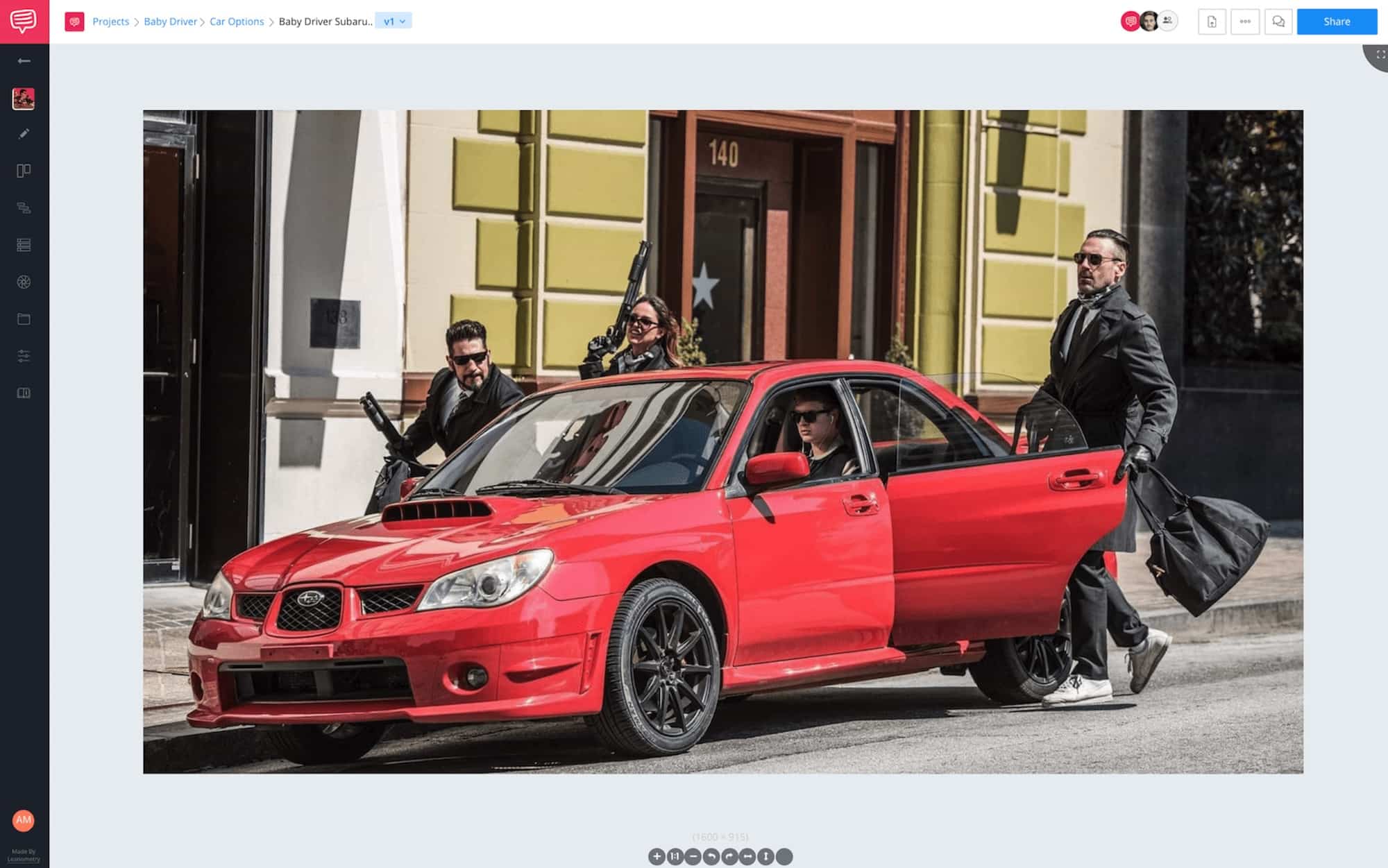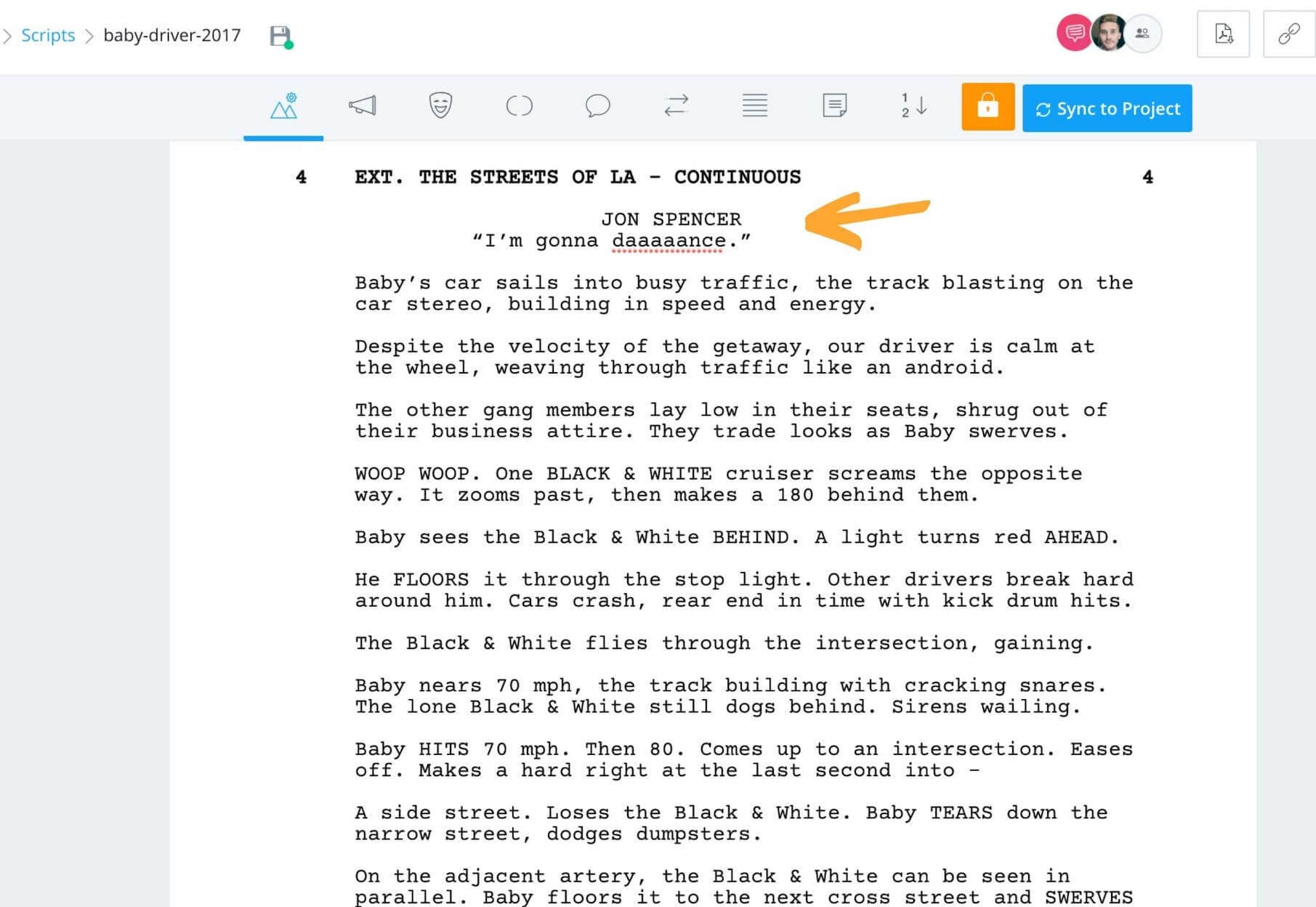T
here’s something about a car chase that captivates an audience. Maybe it’s the need for speed, or, perhaps it’s the knowledge that at any moment the scene can come to an abrupt end that gets the heart racing. But is it easy to pull off?
Nowadays, sophisticated audiences require more from their action scenes. Car chases are a staple of the silver screen and it takes a true craftsman to pen a great chase. So how does a writer craft a car chase scene that is both readable and cinematic? Let’s first take a look at the evolution of these chases, and why incorporating certain elements are so crucial to standing out.
Watch: Anatomy of a Screenplay — Ultimate Guide
On your Marks
1. A brief history of car chases in cinema
The first car chase on film came only a few years after the invention of the camera, and the automobile. In 1903, the Biograph Picture Company produced Runaway Match, our first chase scene example.
The script was less than thrilling
It was probably heart-pounding for most people who hadn’t yet seen a car, much less driven one.
But with each passing decade, the cars became faster and the chase scenes even more electric. Soon enough, there were entire films dedicated to races and chases. After the car chase movies of the 70s, one notable chase scene example sticks out, The Blues Brothers (1980).
So many police cars were harmed in the making of this movie
Twenty years later, sophisticated movie audiences wanted more from their chase scenes than a puttering jalopy or a twenty car police pile up.
Luckily, their hunger was satiated with new ways to film a car chase.
Cameras, riggings, and even the cars became more high tech and what could be achieved with the combination was much more dynamic.
As technology advanced, so did the chase scene ideas. A great chase scene example is from The Italian Job (2003).
The Italian Job (2003)
Or even better, this scene from Ronin (1996). The streets and cars seem to have shrunk in size but the scenes are still lengthy and full of action.
Ronin has one of the best car chase scenes of all time
As cinema evolves, the audience naturally demands more from its films, and therefore, more from you as a writer. Knowing how to write a car chase scene in a screenplay is just as important as knowing how to film a car chase scene.
It seems as though every car chase scene ever shot was leading up to what we feel is the base chase scene ever, and definitely an incredible chase scene example, Mad Max: Fury Road (2015).
The chase scenes in this film are so intense that there were 500 pages of storyboards with barely a script nestled in. Not much help on how to make a chase scene to anyone who wants to know how to script the most bodacious chase in history.
While Mad Max prioritizes visuals to create their chase, becoming masters on how to shoot a chase scene (we’ll get there), other films rely on specific story techniques to do their bidding.
Since the car was invented, cinema has taken this machine and turned it into a vehicle for story. Big explosions, gun fights, and car screeches are all part of the process, but some of the chase scene ideas have focused on the use of setup, character, and props, to advance the story. Giving the audience a reason to be even more on edge because they have more context to care.
Edgar Wright’s, Baby Driver, does this well, and is an excellent car chase script example.
The opening scene is a thing of beauty as we are introduced to a unique character in a familiar getaway scenario. It is the perfect scene to analyze how to craft a thrilling car chase scene.
The screenplay for Edgar Wright’s Baby Driver will be our guide on how to script the perfect car chase that makes the reader want to keep reading, and the viewer glued to the screen.
Related Posts
Hey, Baby Driver
2. Analyzing Baby Driver
Fasten your seatbelt, it’s going to be quite a ride. Baby Driver is one of the most action-packed films involving huge chase sequences. But don’t take my word for it, take a look at this chase scene example.Ansel Elgort leads the cast in a car chase scene like no other
From beginning to end, the scene has the pulse pounding. The filmmakers showed how to shoot a chase scene flawlessly. But how did the writer piece it together so well? Setup, character, and car selection all played a vital role.
Let’s layout the necessary elements of writing such a memorable car chase by examining the opening scene.
So let’s start just before our big chase scene with the setup that serves as the films opening, and a great example of how to write a car chase scene in a screenplay.
THE SET UP
What we notice here is that there is a setup that’s both familiar and subtle. The familiarity is in the action about to take place, a bank robbery. The subtlety is in what the scene tells us about the getaway driver.
THE DRIVER
He is “Young, baby-faced.” Furthermore the script reinforces his innocence with action lines like
“He’s also like a big kid in front of his bedroom mirror. As he drums on the dash, we see shoppers pass, other cars cruise by.”
He also gets a wave from an actual baby.
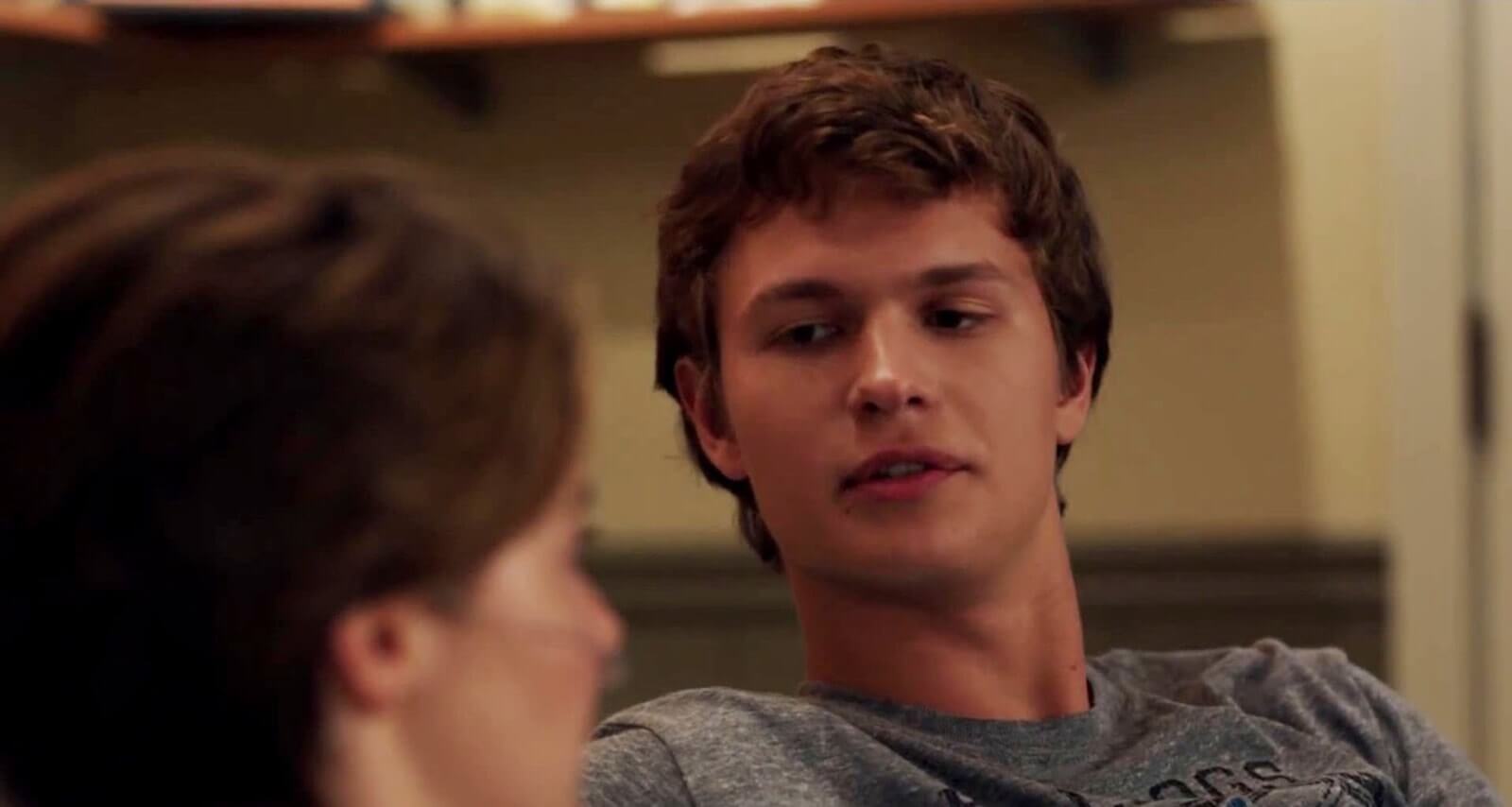
Apparently he is old enough to drive, baby
His appearance is a great way to make us root for this character in advance. He's a kid so we forgive him for any bad he does. He gets a pass.
The character's age also reinforces a fear that he might not succeed. Making it all the more gratifying when he does.
Another important detail that comes in handy in a car chase is the mode of transport.
THE RIDE
The script above presents a vehicle that borders on absurd in this situation and is a great example of how to make a car chase stand out.
“We see the car is a shiny red Honda Civic.”
This car seems like the opposite of what any self respecting chase scene would have. So of course, we keep watching.
Thanks to product placement dollars, the Civic was replaced with a cherry red 2006 Subaru.
But when you're in your script, before any of this happens, it is helpful to have a visual of what could be. Using the media library, can help you visualize how to shoot a chase scene, and may even inform your script.
You never know, just like Baby Driver, a particular car (or prop) could end up advancing your story, instead of merely adding to the aesthetic.
Knowing how to write a car chase scene in a screenplay unconventionally can set you apart.
Writing a car chase involves more than just the chase. Consider these uses of context in these car chase scene examples to create an interesting build, strengthening your scene.
THE LOCATION
Picking an urban location is no accident. The writer knows how to make a chase scene that will immediately raise the stakes. What could have been an open road car chase, is now impeded by everyday obstacles —from mothers with strollers, to police cars and barriers.
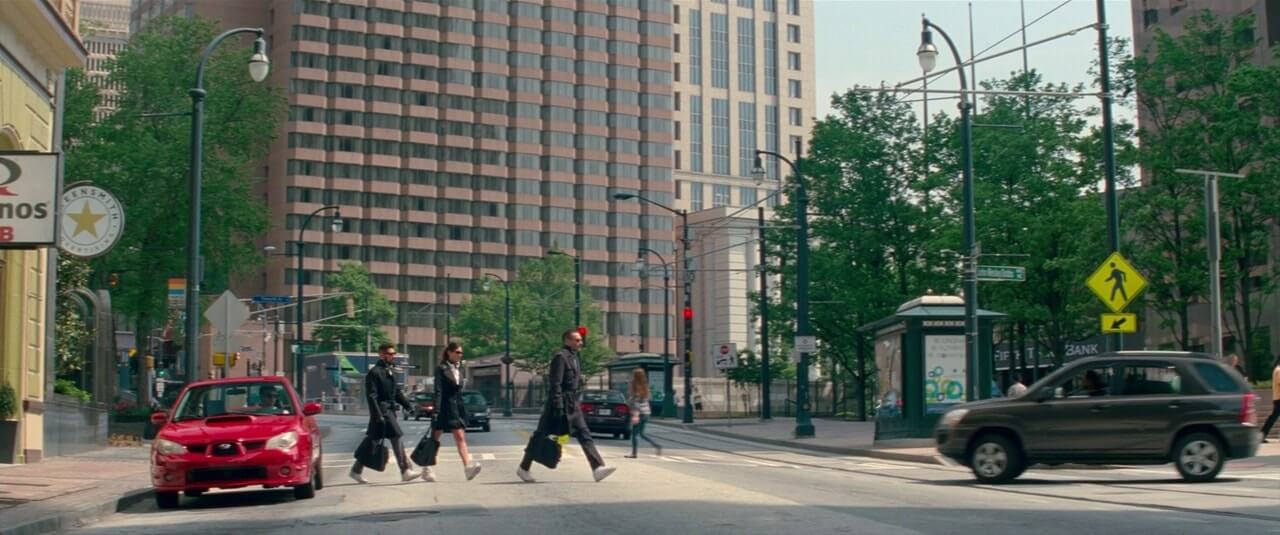
Setting of Baby Driver
The next important consideration in the chase scene, and particularly for this movie, is the music.
THE MUSIC
Baby Driver could be termed a musical as it is so integral to the screenplay.Edgar Wright talks music in Baby Driver
But this isn’t always true for all movies involving chase scenes. Most chase scenes have music written in later to give the reader and the viewer a sense of pacing.
Others, like the Fast and Furious franchise to the original Italian Job, rely heavily on music. The music and sound editing drives the sounds of crashes and revving engines. Music adds intensity, and provides strong guidelines for how to film a car chase.
Now that we have the essentials of the scene, let’s take an even deeper look at how Edgar Wright scripted the all-action sequence that follows the set up.
The beginning and the end of the scene have a sparse one line of dialogue and the rest is all action.
Don’t be afraid to use all action lines if that’s what you want on-screen.
If it’s a few minutes of only car chasing, account for that on the page. It may be easier later when you’re figuring out how to shoot a chase scene.
Though some car chases began with a very different approach.
A CASE STUDY: MAD MAX: FURY ROAD
3. Let’s write a script for Mad Max
Mad Max: Fury Road never had a script. Its creators went off the storyboards, giving them their outline for how to shoot a chase scene.
Now that we are more comfortable with the important elements of a chase, let’s write an action script based on the films storyboards.
Here is the first, and very thrilling, chase scene.
Use less dialogue in chase scenes
Now, let’s remember how to write a car chase scene in a screenplay. Think of our elements for a great car chase scene: the Setup, the Driver, the Ride, Location, and the Music.
Here are the storyboards for the scene.
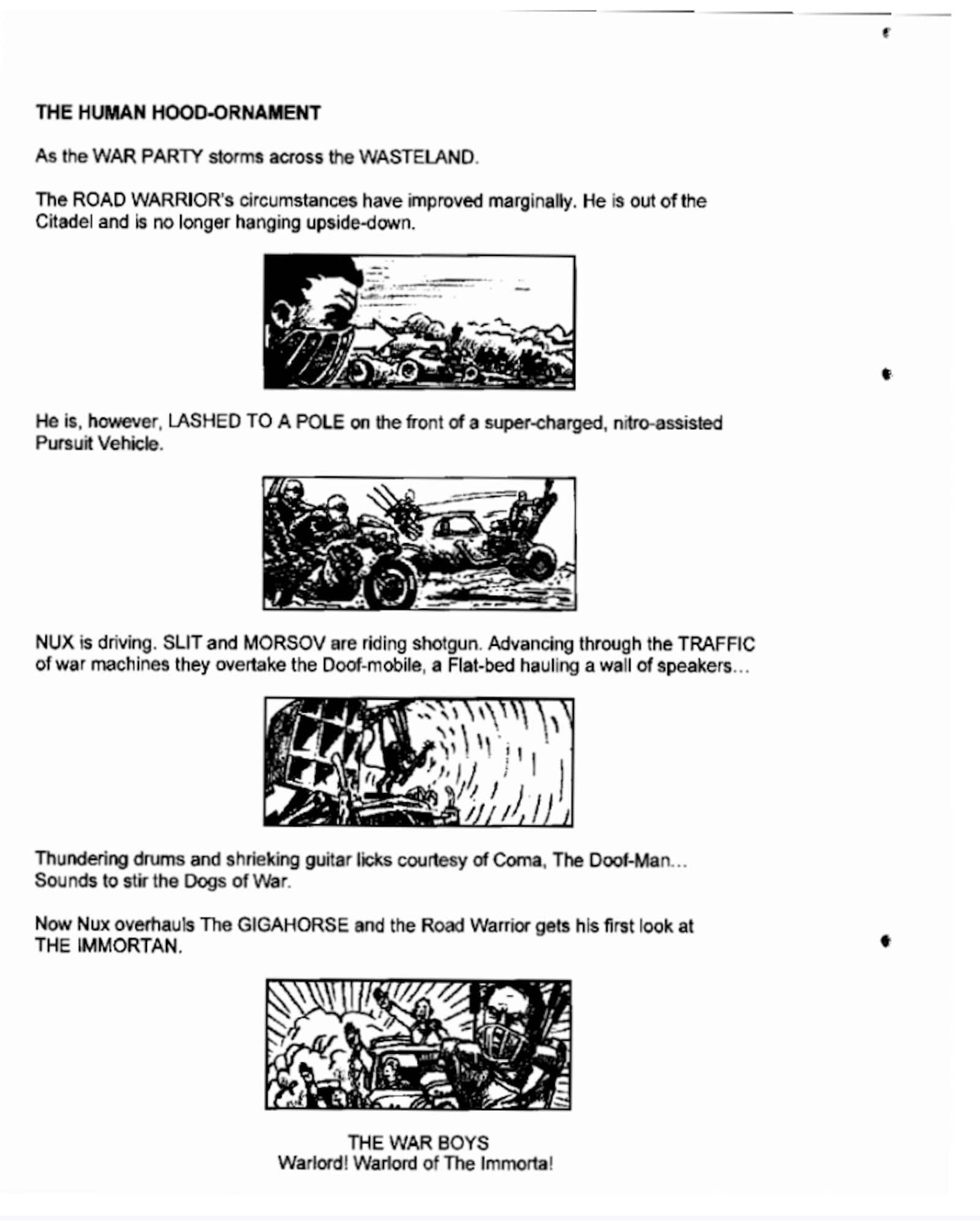
Original Mad Max Storyboard
Here is the scene we need to format and write for director George Miller.
FIRST
We open our preferred writing program and give the script a name. Then let the transcription begin.
SECOND
Let’s put the basics of the boards and action in, and start small — mostly cosmetic formatting and embellishments.
It should come out looking like so:
Taking a look at our scene, we know that we have a setup in that our hero is deeply in peril, we have two of our chief antagonists and villains barreling with a war party, in the middle of the desert wasteland, in vehicles so foreboding they have names.
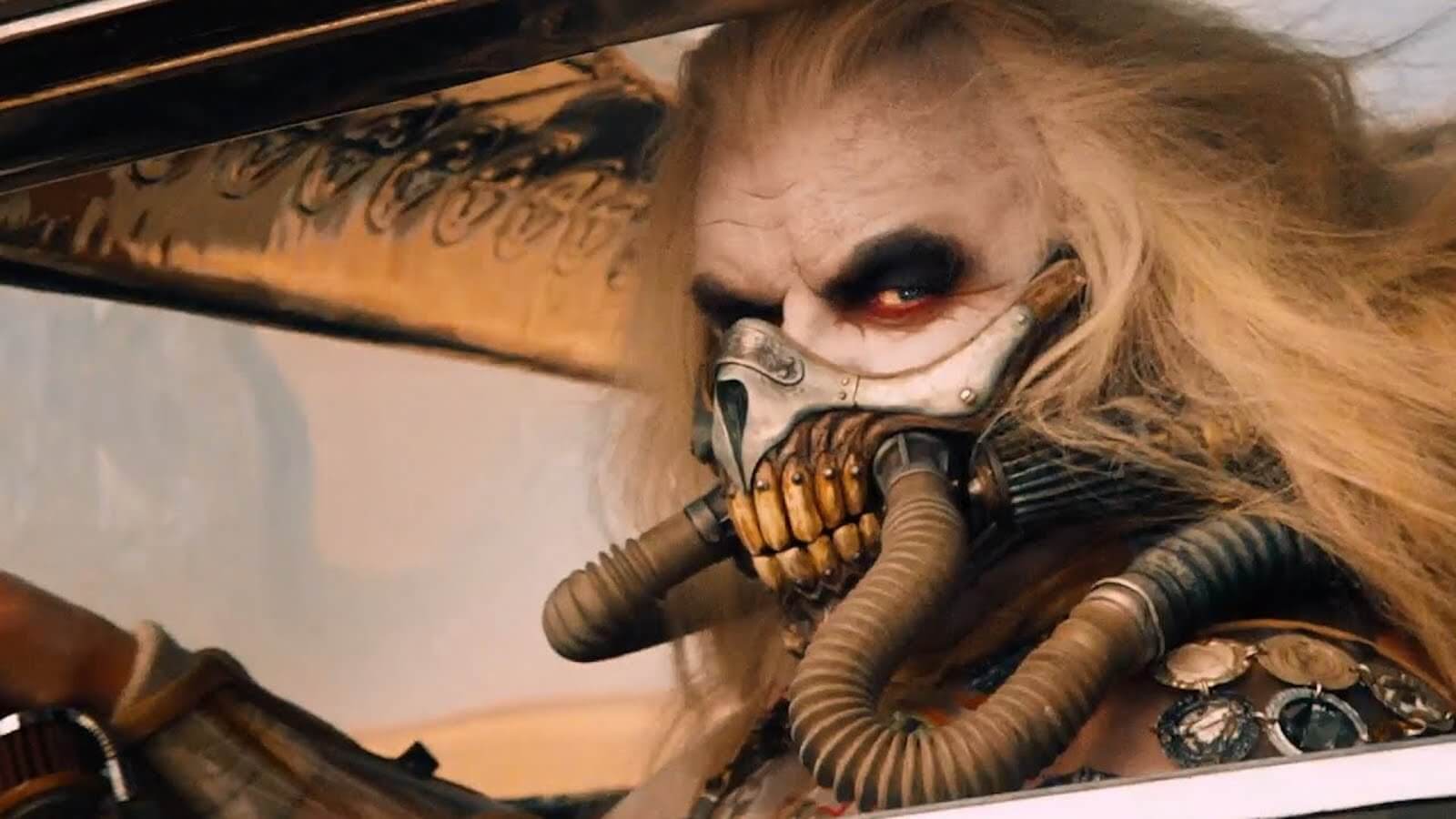
Immortan Joe
There are heavy metal strings and drums blaring from a wall of speakers. This chase scene example has all the elements of a great car chase that Edgar Wright spoke of.
THIRD
Make sure we have something to up the ante so to speak. This just means we need to keep on typing to finish out the page. We need to see who the bad guys are chasing in this sequence.
Screenplay formatting can be difficult from so many different perspectives. I know just writing for a screenplay from room to room can be a challenge, let alone writing a high speed, multi-camera spectacle. But it’s not necessary to know how to film a car chase just yet.
Focus on the best way to write a car chase scene in a screenplay using action lines and little dialogue, and then worry about how to shoot a chase scene later.
HOW TO WRITE A CAR CHASE SCENE
4. Script tips
If you’re having a hard time visualizing your chase scene ideas, try thinking about who the driver is, his or her surroundings, and what kind of car they might drive to help develop the picture in your head.
script tips
- Imagine the scene as fully as possible.
- Remember that it must be scripted visually.
- Make the scene dynamic — add the unexpected.
- Go heavy on Action Lines and light on Dialogue.
- Keep your sentences simple and easy to read.
If you need help visualizing this, download FREE storyboard templates, which will speed up the process of learning how to shoot a chase scene.
Related Posts
Up Next
How to Make a Storyboard
Depending on who you are, visualizing a car chase might be easier than learning how to write a car chase scene in a screenplay. But there are other parts of screenwriting that may be a bit harder to envision. In our next article, let’s explore how to storyboard so you can better understand the movie playing in your head and transfer it flawlessly, to the page.
